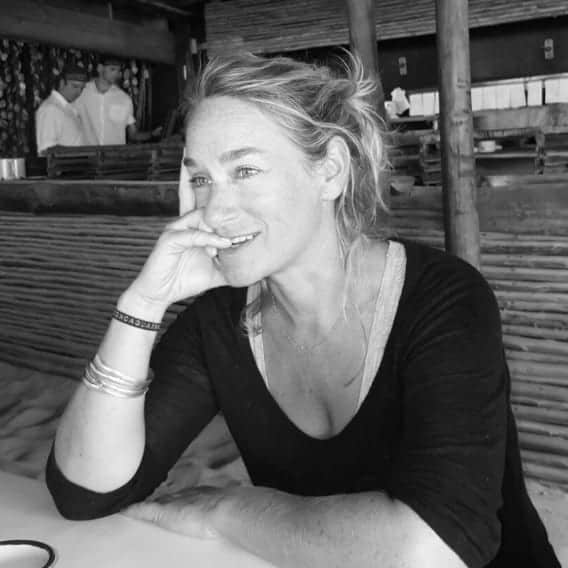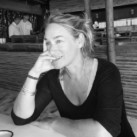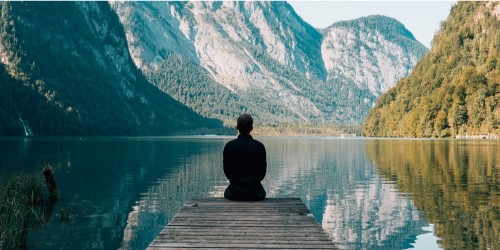
MysticMag chats with Amy Ward Brimmer, a dedicated explorer of mindfulness, spirituality, and self-expression, a trauma survivor turned healer and educator. Founder of Way Opens Wellness, she unites individuals seeking body-mind awakening practices. With certifications in Alexander Technique and as a Registered Somatic Movement Educator, Amy is esteemed by Alexander Technique International and ISMETA. She has taught Alexander Technique to performing artists at renowned institutions like Yale University and Brooklyn College, as well as in a wide variety of settings with people as diverse as ASL interpreters, musicians, massage therapists, church and synagogue groups, lawyers, midwives, doulas, birthing mothers and their partners, and corporate executives.
As her journey into mindfulness evolved, it led her into Mindfulness-Based Stress Reduction (MBSR), and she holds Qualified Teacher status from UMass Medical School, where MBSR originated. Also passionate about Qigong, she leads classes across Philadelphia and beyond. All of Amy’s endeavors draw on her rich background in performance studies, writing, and Insight (Vipassana) meditation practice. Her journey is an embodiment of healing, learning, and guiding others toward inner transformation.
Your work involves a rich exploration of various body-mind practices like Alexander Technique, Vipassana, and Qigong. How have these modalities individually influenced your healing and growth, and how do they intersect in your teachings at Way Opens Wellness?
The heart of the work I do here encapsulates various aspects I’ve grown into over time. My journey began with lessons in the Alexander Technique back in 1989. It opened my eyes to how disconnected I was from my own body. I grew up in a rather dysfunctional family with its share of trauma, and the effect was that by the time I hit my thirties, I had shut off awareness of my physical self to a large degree.
Studying the Alexander Technique, a re-education process for body movement, revealed this lack of conscious connection to my physical being. For instance, I might go all day without eating, ignoring basic signals that are essential to healthy functioning. This disconnection put me at risk for illness and other types of harm and ultimately kept me from experiencing the richness of life – tasting food, savoring the world’s beauty, and connecting authentically with others.
Working with my Alexander teacher to reconnect with my body brought forth old traumatic memories. Through safe touch and the psychotherapy I was also doing, a healing process began. As I became more physically aware, mindfulness and meditation entered my life. While it took years before I became a serious meditator and explored Buddhist teachings, mindfulness meditation became a part of my routine early on.
I’ve been practicing Insight (Vipassana) meditation for about 20 years, and that has been key in the healing of my whole self – body, heart, and mind. The mind and body are not just connected but are One — essentially the same system. No thought exists without some physical manifestation, and physical sensations evoke thoughts and emotions. As a somatic practitioner my approach involves seeing the person as a whole being. Whether we’re practicing meditation or having Alexander lessons, I aim to listen deeply to the body for wisdom.
Way Opens Wellness has evolved from teaching Alexander Technique to offering an array of modalities like Somatic Release bodywork, Qigong, and Compassionate Listening. How do these practices collectively contribute to the mission of awakening mindful transformation, and how do they empower individuals on their wellness journey?
When you learn the Alexander Technique, it’s more than a mere treatment. That’s why I distinguish it from Somatic Release bodywork, which is a blend of various hands-on healing methods I’ve acquired over time. Somatic Release has a different intention than Alexander’s work. For instance, I have a client who is dealing with an attack of acute sciatica and is struggling to walk comfortably. She’s coming in for a Somatic Release session, to restore some balance and alleviate her pain. Hopefully, she’ll walk out feeling better than when she walked in.
In contrast, the Alexander Technique is a learning process, a method of movement re-education. It’s about discovering how we disrupt balance, ease, and free movement in our bodies. Over time, tension patterns accumulate due to inefficient use in everyday movements, such as sitting, standing, walking, bending or reaching for things. These habit patterns affect posture and breathing. When trapped in these habits, as I experienced, we become disconnected from ourselves, leading to stale experiences and often pain.
Addressing specific postural issues leads to a broader awakening. That’s why “awakening mindful transformation” is our slogan. Bringing mindfulness to movement or other life challenges is transformative, because awareness precedes change. Once you’re aware, you have options, a chance to choose a different way of being or responding to life.
Compassionate Listening (CL) grew out of my personal journey of healing trauma, which has been centered around a somatic approach — using the body’s real wisdom as a means of healing. Over the years, I noticed its effectiveness not just for me but also among my Alexander and meditation students, especially when addressing suffering or the effects of trauma. So in a way, Compassionate Listening is something I’ve been practicing with my clients for quite a while, but in the past year or so I have formalized the process. I did some training with Dr. Gabor Matế, a brilliant psychiatrist whose work is somatically based. I have taken much of what I’ve learned from Gabor and other trauma experts like Peter Levine and Stephen Porges, and begun to apply their principles to my own expertise in body-based healing.
In CL sessions, clients bring their troubles, struggles, or questions and together we listen deeply, connecting to the felt sense of the body. Through posing specific queries, I guide clients to tune into their senses, feel where emotions are expressed, and allow the body to communicate its story. It involves intuition, imagination, and trust, as they become interested in whatever the body might reveal.
Sometimes it’s simply about providing a compassionate space for someone to be just as they are, letting them bring whatever they need to the session. My assumption is that the individual I’m working with possesses inner wisdom. My role is to assist them in accessing that. While I occasionally offer advice, most of the time I provide a safe container to explore their needs in a new light and tap into an innate and profound self understanding.
Some people visit me for a few sessions to complement their ongoing talk therapy or other healing practices. And sometimes a client’s needs surpass my expertise and more traditional psychotherapy would be more appropriate, so I will refer them elsewhere. However, in most cases, people are happy to discover the incredible wisdom their bodies hold. When we stop struggling with our bodies and embrace them, we receive valuable insights into what brings ease and possibly more confidence in our lives.
Your book, “Wholly Body,” offers practices to reconnect with our bodies and live with more ease. Could you share a fundamental practice or principle from the book that has been particularly transformative for individuals looking to enhance their body-mind connection?
The book contains dozens of practical body-mind experiments, but one that often stands out is what I call “Pause and Sense.” It might sound simple, but it’s a significant game-changer. This practice has been transformative for me. Essentially, it involves pausing in the midst of whatever you’re doing. For example, as I’m speaking to you now, I could pause and bring attention to what I’m sensing within my body.
It’s about counteracting the tendency to live solely in the realm of thoughts, especially in situations where we’re physically present but mentally elsewhere, like when you’re waiting in a grocery store line. This practice involves pausing and tuning into the present moment, sensing what’s happening around and within you—observing what you see, hear, feel, taste, or even noticing thoughts without getting entangled in them. It’s a way of coming back home to the body, resting attention briefly on the senses. Initially, it might seem trivial, but with practice, it cultivates a deeper presence within yourself, minimizing the need to keep returning from mental distractions. I used to do this often when I lived in New York, taking a few minutes on the subway, just pausing and sensing. You can do it while doing mundane tasks like brushing your teeth or washing dishes—briefly pausing to bring awareness to the activity at hand.
Many have found this simple practice surprisingly revealing. The challenge lies in remembering to do it. It doesn’t take much time, maybe as little as 60 seconds, but remembering to find an opportune moment is key. For instance, driving is an excellent time — being present while driving enhances safety. On highways where your attention isn’t strained, pausing to reconnect with your body can be beneficial. It’s about noticing sensations, like feeling your hands on the wheel or the seat against your back. Pause and Sense is a basic, simple, intentional mindfulness practice, akin to how musicians practice scales or dancers rehearse specific moves repetitively.
The name “Way Opens” draws inspiration from both Zen and Quaker traditions. How does this philosophy inform the approach and guidance you offer to individuals seeking transformation, especially in navigating the uncertainty and changes in their lives?
I’ve been a practicing Quaker for about as long as I’ve been a dharma practitioner, and in both traditions there are sayings that point to trusting in the natural unfolding of life. Quakers have a saying, “way will open,” and there’s an old Zen saying, “move, and the way will open.” Both are statements of faith. This faith isn’t tied to specific beliefs; it’s more about faith in each step along the journey. For me, this approach seeps into everything I do with my students and clients. Even amidst confusion, I encourage taking steps forward, making small changes, experimenting, and trusting the unfolding process.
From a marketing perspective, “Way Opens Wellness” has been a bit challenging because the name can be easily misconstrued. However, the name truly reflects my approach to my work. I firmly believe that opportunities present themselves when we make choices and commit to a path, allowing it to reveal itself along the way. Being present for this process is not just intriguing but immensely rewarding. Trusting in the process and having faith that a path will unfold has been a guiding principle for me.
If you would like to find out more about Amy Ward Brimmer, please visit https://wayopenswellness.com/



